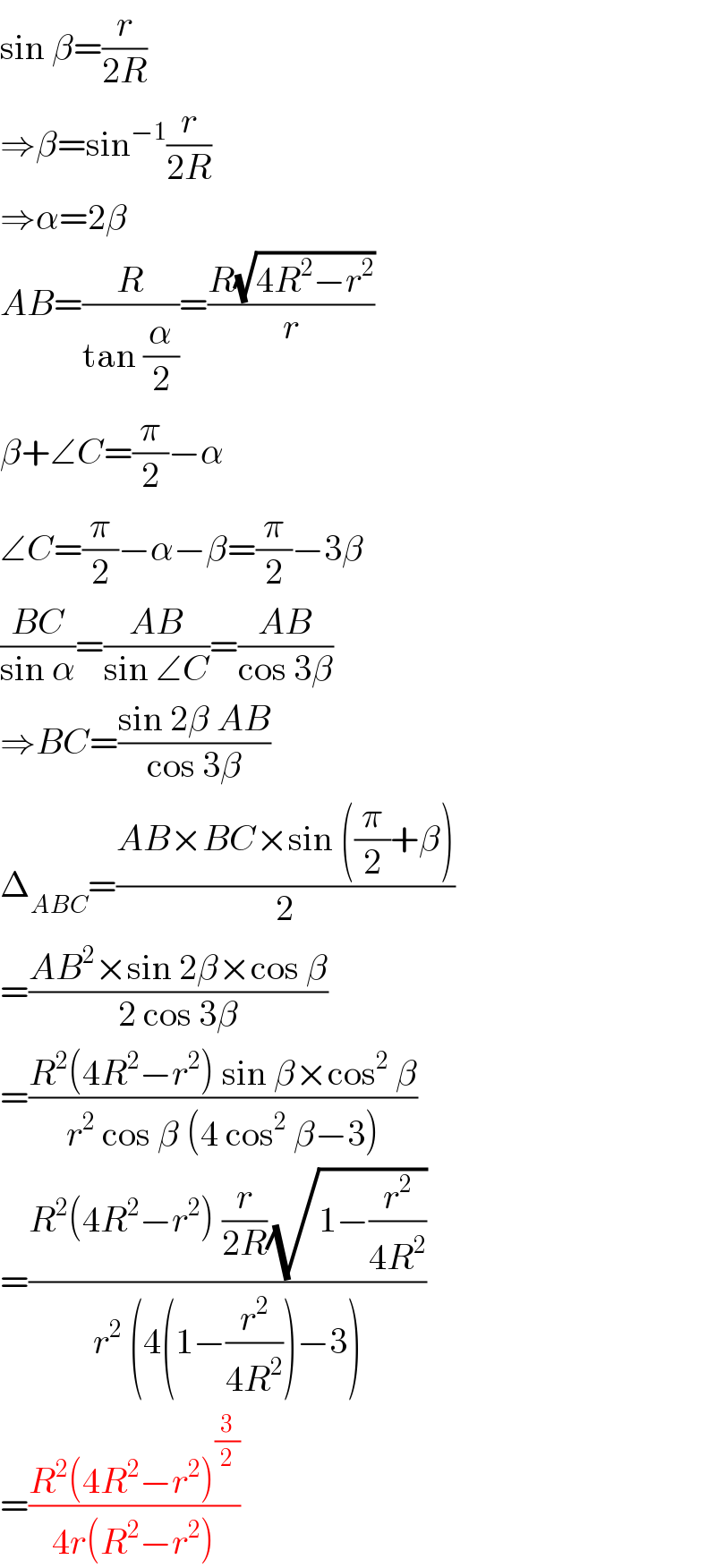
Question and Answers Forum
Question Number 104468 by ajfour last updated on 21/Jul/20

Commented by ajfour last updated on 21/Jul/20

Commented by mr W last updated on 22/Jul/20

Commented by mr W last updated on 22/Jul/20

Commented by malwaan last updated on 22/Jul/20

Commented by mr W last updated on 22/Jul/20

Commented by ajfour last updated on 22/Jul/20

Commented by malwaan last updated on 22/Jul/20

Answered by mr W last updated on 22/Jul/20

Commented by mr W last updated on 22/Jul/20

Commented by ajfour last updated on 24/Jul/20

Commented by mr W last updated on 23/Jul/20

